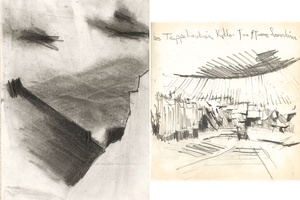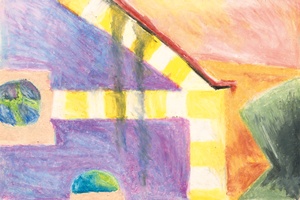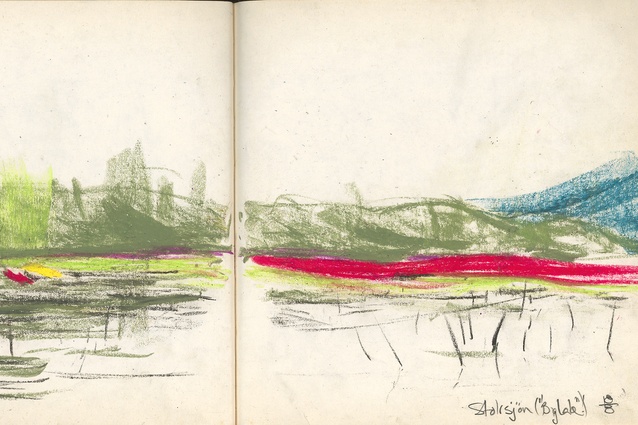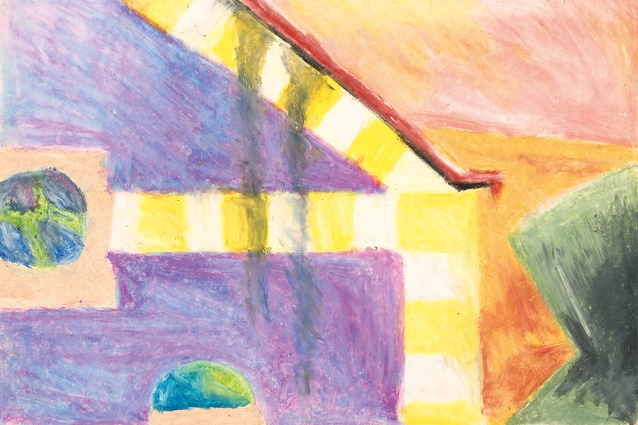Book review: One Year Drawn
Marian Macken discusses this record of a year in the life of architect Pete Bossley – as seen through his drawings.

Why do architects draw? Firstly, to record and document – different from photography – and to communicate that which is built and unbuilt. But, more importantly, to think. Architects think ‘through’ the act of drawing in order to uncover, reveal and speculate, and to draw something out. Joseph Beuys, while not trained as an architect, understood this. He wrote: “Drawing is the first visible thing of the form of the thought, the changing point from the invisible powers to the visible thing. It’s really a special kind of thought, brought down onto a surface.”
Pete Bossley’s One Year Drawn is one architect’s answer to this question. It is a compilation of his thoughts, brought to the surface throughout an important year. In 1982, a 32-year-old Bossley left New Zealand and all its threads of connection – his marriage, his daughters, his emerging architectural practice – to travel and to draw. The resulting sketchbooks bear witness to this transformative year.
The tradition of disseminating the sketches from architects’ Grand Tours is a well-trodden publishing path, seen in examples by Louis Kahn, Le Corbusier and Michael Graves. The imperative to visit and experience buildings, primarily known through study, is strong. While there are particular architectural highs for Bossley – the pilgrimage to Ronchamp, the beauty inside Aalto’s work – One Year Drawn does not lead us through an itinerary of the canon; it is not the architectural equivalent of a twitcher’s scoresheet. It avoids this for various crucial reasons; the nature of the drawings, the accompanying text and the time elapsed since the drawings were made set this book apart.

Bossley travels for one year: a revolution of the earth and the basic unit of how we measure time. It is a year spent constantly moving: Japan, England, Italy, Greece, Turkey, France, Sweden, Finland, the United States. The drawings reflect the rhythm of travel; across the year, the drawings take in more and more context – it is architecture both in place and of its place that is explored. The influence of landscape and climate come into play; ink and pencil in London shift to smudged graphite and crayons for the colours and heat of Turkey in June. Journeying, the space between places, is ever-present. In these transitory moments, Bossley turns to those travelling alongside him, resulting in thoughtful studies of sleeping passengers.
The text in the book is as important as the drawings, offering a parallel contextual narrative – past tense, third person, for some understandable distance. Within this are direct quotes from the sketchbooks – in the present tense of then. These are read as a transcript of the drawer’s thoughts at the time and offer an immediacy to the text (“What a magnificent nutter,” written from within Sir John Soane’s Museum). Embedded within the narrative is a reminder of a type of travel no longer possible: unscheduled itineraries, the ease of finding oneself incommunicado, the heightened importance of letters received by poste restante. There is a revelling in the ephemerality of gatherings, of the joy of people and place momentarily coinciding in time.

The overarching framework of the book, then, is temporal, divided into parts by the completion of each sketchbook; there are ten in all. Importantly, these books have a presence: photographs of each, their covers dated and numbered, are included before we see their contents. Towards the end of the trip, Bossley poses the unanswered question about the influence of the experience. As readers, we encounter these drawings after a 37-year hiatus, long after the dust has settled. They have undergone the filter of time and we understand that the year is seen as a pivot between a before and an after. So, these drawings contain both past and future tenses: the book holds an architect’s shifting relationship to the line, drawing out from himself a way of practising. It invites us to look to Bossley’s built works to see the significance of this unfurling understanding of space and light.
Bossley writes that this is “not a book about drawing architecture”. Instead, One Year Drawn is an honest and generous memoir, a testament to the good that comes from flux, and evidence of the revelatory act of drawing as a lens through which to understand the world and oneself.
This article first appeared in Architecture New Zealand magazine.














